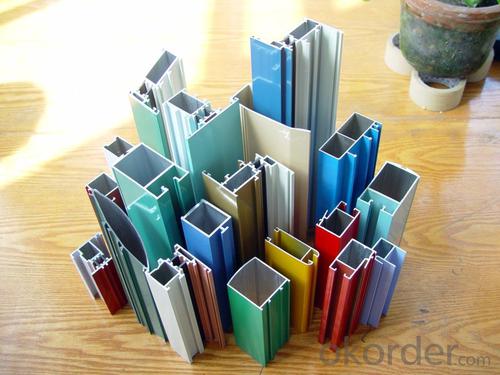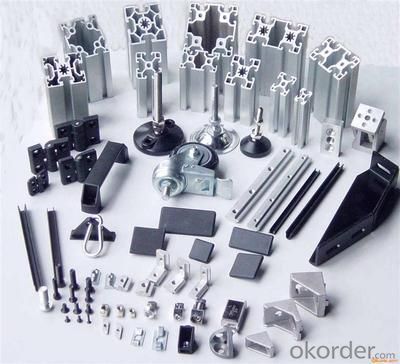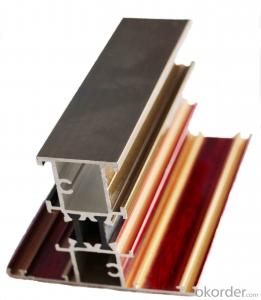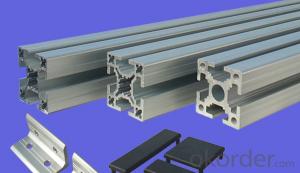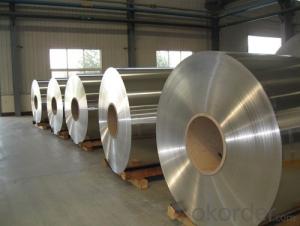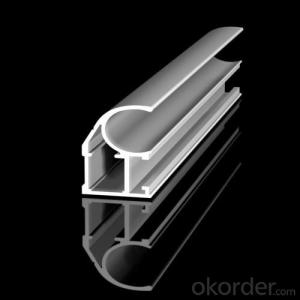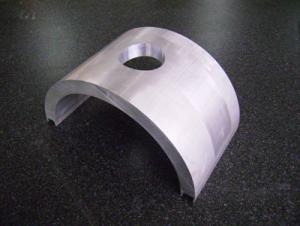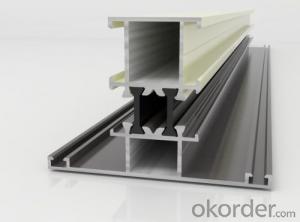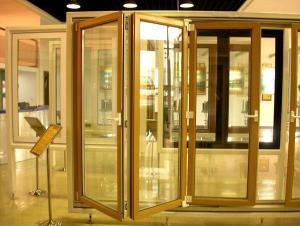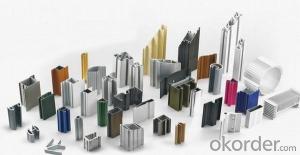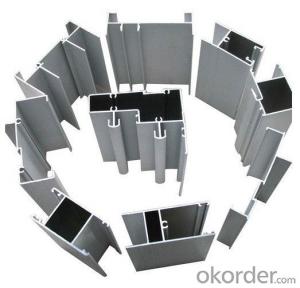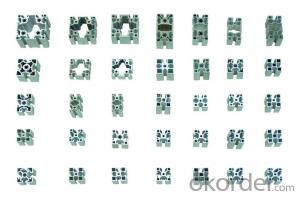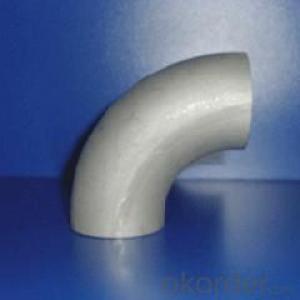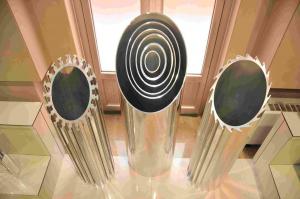China Made Extruded Aluminum Profiles for Door Extrusion Profiles
- Loading Port:
- Guangzhou
- Payment Terms:
- TT OR LC
- Min Order Qty:
- 5 m.t.
- Supply Capability:
- 1000 m.t./month
OKorder Service Pledge
OKorder Financial Service
You Might Also Like
Specification
1.Structure of Extruded Profile Aluminium Profile To Make Doors Description:
Anodizing (also spelled anodising, particularly in the UK and Australia) is an electrolytic passivation process used to increase the thickness of the natural oxide layer on the surface of metal parts. Anodized aluminium surfaces, for example, are harder than aluminium but have low to moderate wear resistance that can be improved with increasing thickness or by applying suitable sealing substances.
2.Main Features of the Extruded Profile Aluminium Profile To Make Doors :
High corrosion-resistance;
weather-resistance;
heat-resistance;
alkali-resistance and impact-resistance properties.
3.Extruded Profile Aluminium Profile To Make Doors Images:
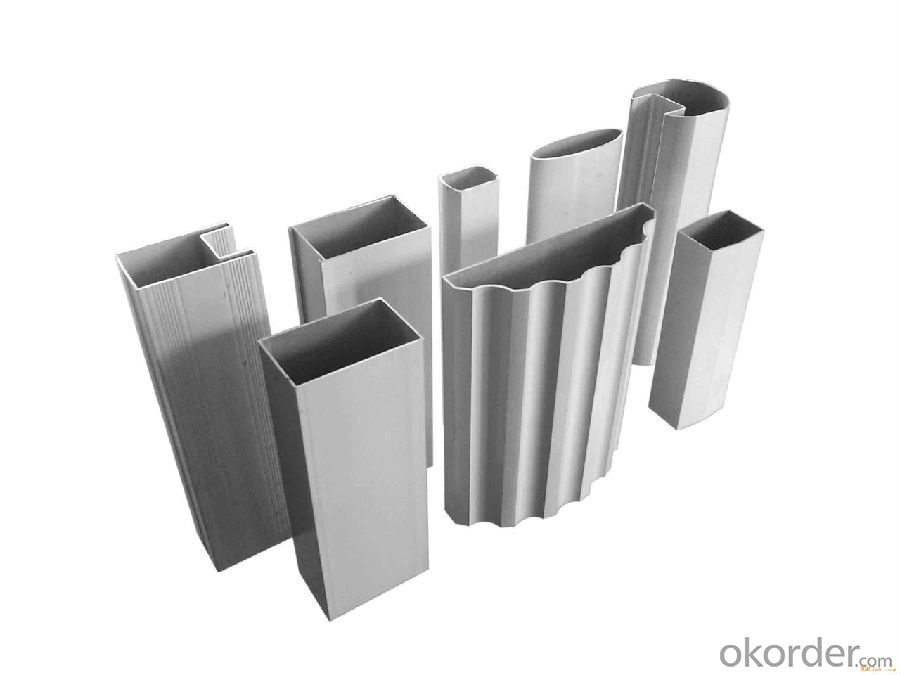
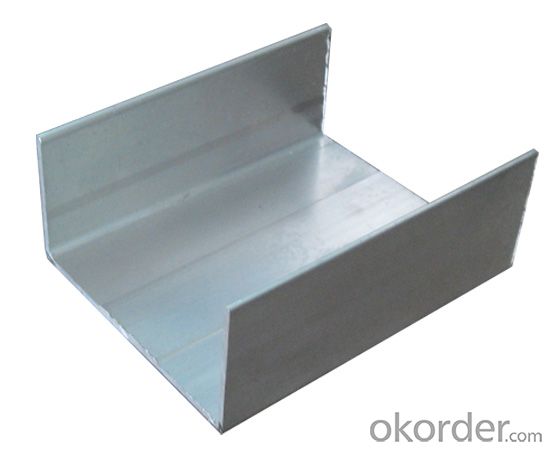
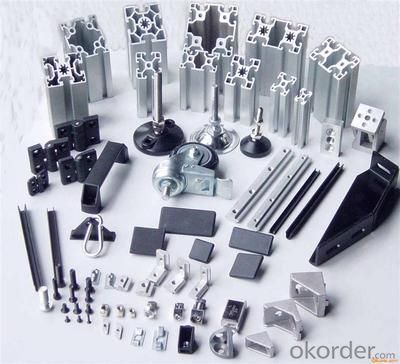
4.Extruded Profile Aluminium Profile To Make DoorsSpecification:
1. Material: 6063,6061,6060,6005,6005A,etc.
2. Temper: T5 or T6
3. Finish: Mill finish, anodizing, powder coating, electrophoresis, wooden transfer or pvdf/carbon-flouride coated, polishing, brushing, sand blasting
4. Various colors: Silver, bronze, black, gold, blue, grey, champagne, bright, etc.
5. Machining: Cutting, punching, drilling, tapping, milling, bending, welding, CNC etc.
5.FAQ:
①How about your company?
A world class manufacturer & supplier of castings forging in carbon steel and alloy steel,is one of the large-scale professional investment casting production bases in China, consisting of both casting foundry forging and machining factory. Annually more than 8000 tons Precision casting and forging parts are exported to markets in Europe, America and Japan. OEM casting and forging service available according to customer’s requirements.
②How to guarantee the quality of the products?
We have established the international advanced quality management system,every link from raw material to final product we have strict quality test;We resolutely put an end to unqualified products flowing into the market. At the same time, we will provide necessary follow-up service assurance.
- Q: How do I cut and shape aluminum profiles?
- To cut and shape aluminum profiles, you will need specific tools such as a miter saw, a hacksaw, or a circular saw with a carbide-tipped blade. Measure and mark the desired length on the profile, ensuring accuracy. Use a miter saw or a hacksaw to cut the aluminum along the marked line. For shaping, you can use a file or a deburring tool to smooth out any rough edges. Additionally, if you need to bend the aluminum, a sheet metal brake or a vise can be used. Always wear appropriate safety gear, such as gloves and safety glasses, when working with aluminum profiles.
- Q: Are aluminum profiles suitable for curtain walls and facades?
- Yes, aluminum profiles are highly suitable for curtain walls and facades. Aluminum is a lightweight, durable, and versatile material that offers numerous benefits for these applications. Firstly, aluminum profiles provide excellent strength and structural integrity, making them capable of withstanding various weather conditions, including wind loads and seismic forces. This makes them ideal for curtain walls and facades, where structural stability is essential. Additionally, aluminum is highly corrosion-resistant, which is crucial for exterior applications. It does not rust or deteriorate when exposed to moisture or other environmental factors, ensuring the longevity and durability of the curtain walls and facades. Furthermore, aluminum profiles offer design flexibility. They can be easily extruded into various shapes and sizes, allowing for the creation of unique and visually appealing curtain wall systems and facades. Aluminum also has a high strength-to-weight ratio, enabling the construction of large and expansive glazed areas while minimizing the overall weight of the structure. Aluminum profiles are also easy to install and maintain. They can be prefabricated and assembled off-site, reducing on-site construction time and costs. Additionally, aluminum requires minimal maintenance, typically only requiring occasional cleaning to maintain its appearance and functionality. Moreover, aluminum is a sustainable material. It is fully recyclable, meaning that it can be reused and repurposed at the end of its lifecycle, reducing waste and environmental impact. This aligns with the growing demand for eco-friendly and sustainable building practices. In conclusion, aluminum profiles are highly suitable for curtain walls and facades due to their strength, durability, corrosion resistance, design flexibility, ease of installation and maintenance, as well as their sustainability. They offer numerous advantages that make them a popular choice for architects, engineers, and building owners in these applications.
- Q: Can aluminum profiles be used for display cases or cabinets?
- Yes, aluminum profiles can definitely be used for display cases or cabinets. Aluminum profiles are lightweight, durable, and have a sleek, modern appearance which makes them a popular choice for displaying products or storing items in cabinets. They can be easily customized and come in various sizes and shapes to meet specific design requirements. Additionally, aluminum profiles are corrosion-resistant, making them suitable for both indoor and outdoor applications. They also offer excellent thermal conductivity, which can be beneficial for controlling temperature in display cases or cabinets. Overall, aluminum profiles provide a versatile and attractive solution for creating display cases or cabinets.
- Q: It is now the most urban rail trains, as well as the manufacturing methods and processes of large parts profiles used in the manufacture of CRH3 type emus.
- According to the technical requirements of the components, the process is as follows: aluminum ingot - Dissolution alloy ratio - into rod material - extrusion forming - aging - surface treatment - cut by component size - finished product!
- Q: Are there any specific regulations or standards for using aluminum profiles in certain industries?
- Industries like construction, transportation, aerospace, and manufacturing have established specific rules and guidelines for utilizing aluminum profiles. Aluminum profiles find widespread use in these sectors. They must adhere to various requirements and standards to guarantee the safety, performance, and quality of the products or structures incorporating them. For instance, in the construction industry, building codes and regulations dictate the proper use of aluminum profiles in windows, doors, curtain walls, and building facades. These codes outline the necessary strength, fire resistance, energy efficiency, and structural integrity of the aluminum profiles employed in these applications. Similarly, the transportation industry relies heavily on aluminum profiles for manufacturing vehicles such as cars, trucks, trains, and airplanes. The Department of Transportation (DOT) and the Federal Aviation Administration (FAA) have established regulations and standards governing the use of aluminum profiles in these applications. These regulations ensure that the aluminum profiles employed in transportation are both robust and lightweight, meeting essential safety requirements. In the aerospace industry, stringent regulations and standards exist for aluminum profiles used in aircraft manufacturing. Aluminum profiles utilized in aircraft must satisfy demanding criteria concerning strength, durability, corrosion resistance, and fire resistance. Organizations like the FAA and the European Union Aviation Safety Agency (EASA) have developed guidelines and standards to ensure the secure and dependable usage of aluminum profiles in the aerospace sector. Manufacturing industries also have their own distinct regulations and standards for utilizing aluminum profiles in various applications. These standards primarily focus on the quality and dimensional tolerances of the aluminum profiles, as well as any specific requirements regarding their use in manufacturing processes or equipment. Overall, specific regulations and standards govern the utilization of aluminum profiles in particular industries to ensure compliance with safety, performance, and quality requirements. These regulations play a crucial role in ensuring that aluminum profiles are utilized in a secure, dependable manner that meets the unique demands of the industry in which they are employed.
- Q: Can aluminum profiles be used in the production of food processing equipment?
- Aluminum profiles are indeed applicable in the production of food processing equipment. They possess a number of advantages for this purpose due to their lightweight and versatile nature. Their non-toxic and non-corrosive properties make them an ideal option for use in food processing environments where hygiene is of utmost importance. Moreover, aluminum profiles can be effortlessly cleaned, exhibit high resistance to chemicals, and remain unaffected by moisture or humidity. In addition, aluminum serves as an efficient heat conductor, which is crucial for ensuring effective food processing. Furthermore, it boasts exceptional structural strength and can be easily fabricated to produce customized equipment. Overall, aluminum profiles are widely favored in the food processing industry owing to their enduring nature, versatility, and hygienic attributes.
- Q: Can aluminum profiles be used in the construction industry?
- Yes, aluminum profiles can be used in the construction industry. Aluminum profiles are lightweight, durable, and resistant to corrosion, making them suitable for various applications in construction. They can be used for the fabrication of windows, doors, curtain walls, and structural components such as beams and columns. The versatility and strength of aluminum profiles make them a popular choice in the construction industry.
- Q: How do aluminum profiles perform in terms of electrical conductivity?
- Aluminum profiles have relatively low electrical conductivity compared to other metals such as copper or silver, but they still conduct electricity to some extent. They can be used for applications where moderate conductivity is required, but for high-performance electrical applications, other metals may be more suitable.
- Q: This question asks about the various types of aluminum profiles that are specifically used in roof insulation systems.
- <p>Aluminum profiles for roof insulation systems are designed to provide structural support and thermal insulation. Common types include: 1) U-channels, which are used as support beams; 2) C-profiles, used for connecting and securing insulation boards; 3) H-profiles, serving as main rafters or purlins; 4) Z-profiles, often used as secondary rafters or for sealing; 5) T-profiles, used for creating airtight seals at the edges; and 6) L-profiles, which can be used for corner reinforcements. These profiles come in various sizes and thicknesses to suit different roofing specifications and insulation requirements.</p>
- Q: How do aluminum profiles perform in earthquake-resistant structures?
- Aluminum profiles perform well in earthquake-resistant structures due to their lightweight yet strong properties. They have high strength-to-weight ratio, which helps in reducing the overall weight of the structure while providing sufficient strength to withstand seismic forces. Additionally, aluminum is highly ductile and can absorb a significant amount of energy during an earthquake, thereby reducing the risk of structural failure. Furthermore, aluminum profiles can be easily fabricated and assembled, offering flexibility in design and construction. Overall, aluminum profiles contribute to the resilience and performance of earthquake-resistant structures.
Send your message to us
China Made Extruded Aluminum Profiles for Door Extrusion Profiles
- Loading Port:
- Guangzhou
- Payment Terms:
- TT OR LC
- Min Order Qty:
- 5 m.t.
- Supply Capability:
- 1000 m.t./month
OKorder Service Pledge
OKorder Financial Service
Similar products
Hot products
Hot Searches
Related keywords



